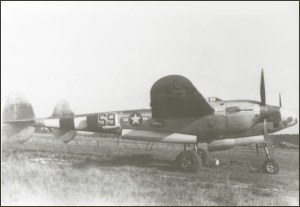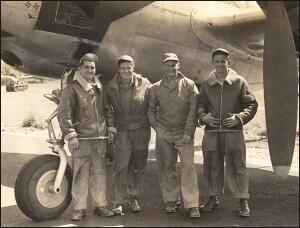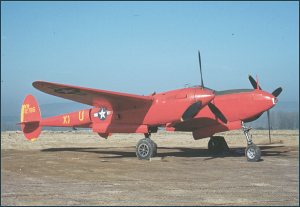| a/c name: | type: | s/n: | sqdrn code(s): | notes: |
| My-Little D-Icer | F-5A-3-LO | 42-12786 | S9 | Pilot(s): Various (Dicing/IFR-hack) |
  |
This one of a handful of Lockheed Lightnings specially converted for low-level use over the beaches of Normandy by the 10th Photo Group. 42-12786 was built in October 1942 and was the last of 20 F-5A-3-LOs produced by Lockheed. 12786 briefly served in the ZI until becoming one of the first F-5A-3-LOs to arrive in the UK in December 1942. Initially operated by the 13th PRS, 7th PRG, 8th AAF through early 1943; it was transferred to the 22nd PRS, 7th PRG in July 1943 and served there until written-off for salvage 22 April 1944. It was immediately transferred to the 9th AAF and to the 34th PRS, 10th PRG on 14 May 1944 via the 30th Service Group and would serve with the 34th until the very end.
Perhaps more important was Lee Weigand's suggestion of fitting the armoured glass, as this inspiration spared Lt. Keith's life. It was on 20 May 1944 that Lt. Keith had a 360 mph encounter with a seagull upon finishing his "dicing" run. Shattering the windscreen, the gull deflected off the armoured glass thus saving Lt. Keith's life and sparing the vital film in the magazines. A "kill" was later painted on the nose for the gull along with two swastikas for each "dicing" mission flown! Having been released from the 22nd PRS, #786 still wore colors from that organization. These colors included: blue spinner caps, red flashes on the cowls and black on the canopy frames. Anti-glare paint on camera-bay hood was likely added prior to the "dicing" missions. Photos of #786 while with the 7th PRG show it wearing standard olive drab paint and bearing the name "Eclipse". By the time of the "dicing" missions she wore a well polished natural metal finish save the colors left from the 8th AAF. (34th PRS Archive) |
|||
| a/c name: | type: | s/n: | sqdrn code(s): | notes: |
| My-Little D-Icer | F-5A-3-LO | WW-12786 | XX*U | Pilot(s): Various (IFR-hack/piggy-back) |
 |
After Lt. Keith and Lt. York earned their DFC's in her over the beaches of Normandy, "My-Little D-Icer" would be converted to a "piggy-back" with the radios being moved to the nose. In late July, 1944 -- 786 was still the fastest ship on the line at 365 mph straight and level. Declared "war-weary" and painted overall red with yellow markings WW-12786 served out the rest of her career with the 34th until demolition in 1945. (Richard Kill) |
|||
